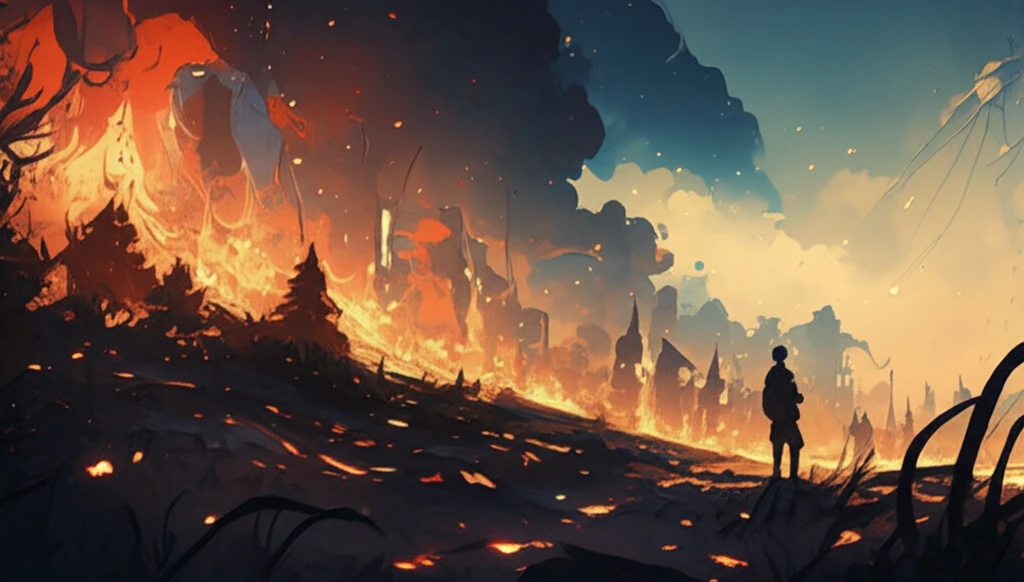
Battling Wildfires: How Advanced Modeling Can Help Us Stay Ahead
"Explore the latest scientific insights into wildland fire propagation and the innovative modeling techniques that are helping to protect our communities and ecosystems."
Wildfires are an increasing threat to communities and ecosystems worldwide. The scale and intensity of these fires are fueled by climate change, land management practices, and other factors. Traditional methods of firefighting and prevention are often insufficient to cope with the growing challenge. As such, scientists and researchers are constantly seeking innovative solutions to understand, predict, and mitigate the impact of wildfires.
One promising avenue of research involves advanced modeling techniques that simulate the behavior of wildland fires. These models use complex algorithms and data inputs to predict how a fire will spread, taking into account factors such as wind speed, fuel type, and terrain. By tracking the "random fronts" of a fire—the leading edges that advance unpredictably—scientists can gain insights into the dynamics of fire propagation and develop more effective strategies for containment.
The field of wildfire modeling is constantly evolving, with new research and technologies emerging to improve our understanding and predictive capabilities. This article delves into the world of wildfire modeling, exploring the latest scientific insights and how they are being applied to protect our communities and ecosystems. As wildfires become more frequent and intense, advanced modeling techniques offer a crucial tool in our fight against these destructive events.
Understanding Wildfire Propagation: The Role of Modeling

Wildfire modeling is a multidisciplinary field that combines elements of physics, mathematics, computer science, and environmental science. The goal is to create simulations that accurately represent the behavior of a fire, from its initial ignition to its eventual containment. These models can be used for a variety of purposes, including:
- Predicting fire spread: Models can forecast how a fire will move across the landscape, allowing firefighters to anticipate its path and allocate resources accordingly.
- Assessing risk: Models can identify areas that are most vulnerable to wildfires, helping communities to prioritize prevention efforts and prepare for potential evacuations.
- Evaluating management strategies: Models can be used to test the effectiveness of different fire management strategies, such as prescribed burns and fuel breaks.
- Training firefighters: Models can provide realistic simulations of fire behavior, allowing firefighters to practice their skills in a safe and controlled environment.
The Future of Wildfire Modeling: Protecting Our Communities and Ecosystems
As wildfires become an increasingly pressing issue, the role of advanced modeling techniques will only grow in importance. By continuing to refine and improve our models, we can enhance our ability to predict, manage, and mitigate the impact of these destructive events. Ultimately, this will help us to protect our communities, ecosystems, and the planet as a whole. The ongoing research and development in wildfire modeling offers hope for a future where we can better coexist with fire and minimize its devastating consequences. With each advancement in modeling and technology, we move closer to a more resilient and sustainable approach to wildfire management.
